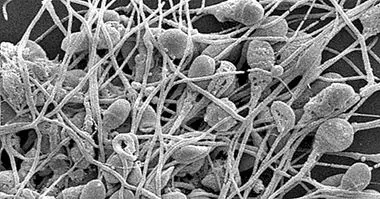Sandifer syndrome: symptoms, causes and treatments
The human body is a complex organism, possessing different systems dedicated to diverse vital functions for our survival and that generally act in a coordinated and correct way.
One of these systems is the digestive, thanks to which we can incorporate necessary nutrients for survival. However, sometimes this and other bodily systems can present problems or alterations such as malformations or intolerances, or various diseases, injuries and disorders can enter into action.
Sandifer syndrome is one of these disorders, which occurs during childhood and causes different symptoms , although it is not considered dangerous for the child.
Sandifer syndrome: description and symptoms
Sandifer syndrome is a disorder that is often cataloged as a paroxysmal motor, in which Motor symptoms arising from alterations in the digestive system appear . It is a disease that appears in children and especially during the first years of life, although it can appear at any time between birth and adolescence, being frequent that the age of appearance is around eighteen months of age.
Children with Sandifer syndrome experience jerks and spasms lasting several minutes (usually between one and three) in areas such as the head, arms or legs with hyperextensions and various rotations. They often cause torticollis, stiff postures, and back bows. And in some cases there is also obstructive apnea. These motor alterations may appear at different times of the day, but tend to appear especially after ingestion and generally cease during sleep.
In this sense another one of main symptoms is the presence of esophagitis, or inflammation of the esophagus. Frequently they have anemia caused by lack of iron, lack of appetite and dysphagia, vomiting and abdominal pain . Hypotonia, weakness and fatigue may also appear.
Causes of this disease
It is considered that the etiology of Sandifer syndrome is found in the digestive tract. Generally, it is associated with the presence of reflux during digestion, partially regurgitating the food as it passes from the stomach to the esophagus.
Another possible cause is when the infant has a hiatus hernia , in which part of the digestive tract protrudes through the diaphragm and passes into the thorax instead of the abdomen. This can cause pain in the child, and in turn cause the aforementioned reflux.
It is speculated that in many cases the muscle spasms are the result of an attempt to reduce the level of pain caused by gastroesophageal reflux.
Although the symptoms appear to be neurological, as a general rule at the brain level the child presents a neurotypic neuronal activity, with no alterations observed at the electroencephalogram level. Thus, Sandifer syndrome would not be caused by a brain or nervous problem, not spasms of epileptic seizures (with which this disorder is often confused).
Behavioral alterations
Although the Sandifer syndrome does not imply the existence of behavioral alterations, it must be taken into account that depending on its duration and time of appearance, the pain derived from the problems that generate it can generate in the child a certain fear conditioned to the fact of feeding . This can cause problems such as limited food or refusal to eat, although in the long run this fear can be extinguished as food intake occurs without pain.
Also the presence of anemia can cause inactivity and lack of motivation in the child , and sleep disturbances that can range from insomnia to hypersomnia.
Treatments
Sandifer syndrome is a disorder whose prognosis is positive and has a good level of recovery , being rare that there are severe complications for the minor. However, it is important that there is an early diagnosis to prevent possible problems and seek a treatment that eliminates or reduces the problem of the digestive system that generates it.
In this sense, it seeks to treat the problem that generates the syndrome. A treatment for gastroesophageal reflux is usually established, in which pharmacologically the level of stomach acid is reduced. As well a surgical procedure may be required if it is due to a hiatus hernia or the treatment for reflux is not effective.
In addition, other possible symptoms such as anemia due to lack of iron should be treated, and inflammation reduced in cases of esophagitis.
Bibliographic references:
- López, J.M. (1999). Motor paroxysmal disorders. Rev Neurol; 28 (161): 89-97.
- Quintero, M.I .; López, K .; Belandria, K .; Navarro, D. (2012). Sandifer syndrome.About gastroesophageal reflux disease in children. Gen 66 (2). Caracas
- Sherman, P. et al. (2009). A Global, Evidence-Based Consensus on the Definition of Gastroesophageal Reflux Disease in the Pediatric Population. Am. J. Gastroenterol., 104: 1278-1295.



















